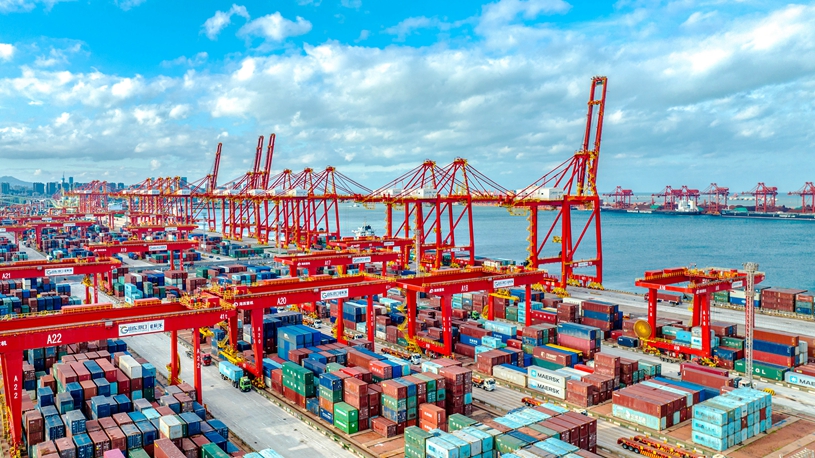BEIJING, July 5 (Xinhua) -- In late June, passengers traveling between Beijing Daxing International Airport and Yizhuang, a southern district of Beijing, were able to choose, if they like, the services provided by driverless robotaxis, with just a few clicks on their mobile phones.
Although for security concerns, these robotaxis are operating under the supervision of safety drivers behind the wheels, this breakthrough in the commercialization of self-driving technology marks a significant step for Beijing's intelligent transportation.
Even with about 40 km of highway to travel during the whole journey, these autonomous vehicles can run smoothly and pass through toll stations with ease.
"I feel like sometimes I don't respond as quickly as the self-driving system does," said Tang Zhiyuan, a safety driver at Pony.ai, one of the two domestic autonomous driving service providers approved to offer such services in the capital city.
This increasingly intelligent travel experience is a result of China's accelerated efforts to build smart city over the years. A nationwide network of integrated intelligent vehicles, smart roads, and real-time cloud technologies is being rolled out.
Yizhuang initiated an autonomous driving demonstration area in 2020. The intelligent road system there can sense traffic conditions using holographic smart devices, while multifunctional poles positioned along the road transmit computational data to vehicles and real-time cloud systems. Thanks to vehicle-road collaboration technology, cars receive optimal travel solutions, significantly improving traffic safety and efficiency.
"With the construction of the roadside sensing system, the traffic lights at the intersections in Yizhuang can now be dynamically adjusted 110 times a day according to the traffic flow," said Zhai Qian, deputy director of the city operation bureau in Yizhuang. "Despite a 20 percent increase in local traffic volume last year, the average vehicle speed has risen by more than 15 percent."
Last month, Beijing expanded its designated autonomous driving zone from 160 square km to 600 square km. More than 400 road intersections and 10 km of expressways in the area have been equipped with roadside intelligent facilities and a dedicated smart city network.
Five ministries, including the Ministry of Industry and Information Technology and the Ministry of Transport, jointly issued a notice on Wednesday to identify 20 cities or urban agglomerations, including Beijing, Shanghai and Guangzhou, as pilot areas for the application of the intelligent network integrating vehicles, roads and cloud.
"Without the development of communication infrastructure and intelligent computing technology, these intelligent interconnections cannot be realized," said Chen Fengxian, a senior analyst at China Telecom Research Institute.
By the end of May, China had built over 3.83 million 5G base stations, accounting for over 60 percent of the global total, according to the Ministry of Industry and Information Technology.
According to a report released by the World Intellectual Property Organization, 54,000 generative AI patent applications were filed globally in the past decade, and China filed over 38,000 patents, ranking first in the world.
In addition to playing an increasingly important role in smart travel and addressing "big city diseases" such as traffic congestion and environmental pollution, digital technology is also reshaping the emergency management mechanisms of Chinese cities.
Southwest China's Chongqing Municipality, located at the confluence of the Yangtze and Jialing rivers, is actively exploring new paths to modernize megacities. Last July, Chongqing launched an intelligent flood prevention and rescue system as part of this effort.
The collaborative application system connects over 2,800 automatic weather stations and 32 hydrographic stations in the Jialing River basin, enabling real-time big-data monitoring of rain and water conditions across the entire basin. Additionally, it uses three-dimensional modeling of buildings along the river to accurately delineate disaster areas, facilitating the evacuation of local residents in case of emergency.
In May, China unveiled a guideline on promoting the development of smart cities and urban digital transformation to make urban management smarter. By 2027, China expects to see significant progress in the digital transformation of urban areas and will have built a number of smart cities that are more livable and resilient, according to the guideline.
Despite the challenges of data sharing and data security in the development of smart cities in China, Chen remains optimistic.
"Challenges always come hand-in-hand with opportunities. This policy will further address the bottlenecks in China's smart city development," Chen said. ■











